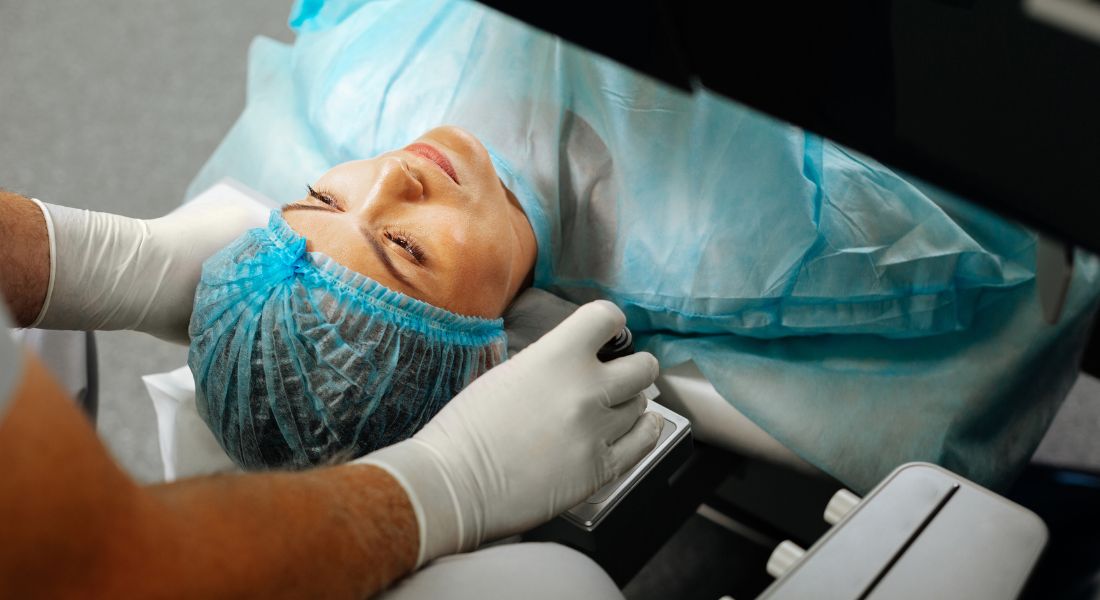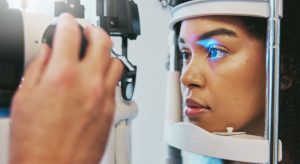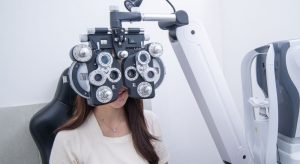LASEK Surgery Recovery: Common Misconceptions and What No One Tells You

You might be expecting everything to happen in a neat, linear way, but LASEK recovery is rarely a straight line. Some days your vision may look great; the next day it may feel blurry again. Some people feel almost no pain, while others are caught off guard by the burning sensation during the first 24 hours. Some patients heal quickly, while others take a little longer to reach clarity and both are completely normal.
In this article, I’m going to walk you through the most common misconceptions about LASEK recovery. I’ll explain what healing actually looks like, what no one usually tells you before the procedure, and how to make sense of every stage of the journey. My goal is to reassure you, educate you, and prepare you so that nothing about your recovery feels mysterious or alarming.
Let’s start by looking at the biggest myths patients hear about LASEK.
Misconception 1: “Recovery Takes Only a Few Days.”

Many people assume LASEK recovery is quick because its cousin procedure LASIK has an extremely fast recovery timeline. Unfortunately, this leads to unrealistic expectations.
The truth is:
– LASEK recovery takes longer, not shorter.
– You may need 1–2 weeks before you feel “functional.”
– Your vision continues improving for weeks to months.
LASEK involves removing (and sometimes repositioning) the epithelium the outer skin of your cornea. This layer takes time to regrow and stabilise. Even after the initial healing phase, the deeper layers of your cornea continue adjusting and smoothing out.
If you go into the surgery expecting a fast recovery, you may feel discouraged. But if you understand that recovery is layered and progressive, you’ll interpret every stage more calmly.
Misconception 2: “LASEK Is Extremely Painful.”
You may have heard horror stories from people claiming LASEK is unbearably painful. This is one of the biggest fears patients have.
Here’s the reality:
– The procedure itself is painless due to numbing drops.
– Most discomfort happens after, not during, treatment.
– The severity varies from person to person.
Most people describe the early discomfort as:
- burning
- gritty sensations
- stinging
- light sensitivity
The peak is usually within the first 24–48 hours. But after that, the sensation reduces quickly. Some patients feel almost no pain at all especially when the bandage contact lens fits well and drops are used correctly.
Pain management during recovery is extremely effective, and your surgeon will give you everything you need to stay comfortable.
Misconception 3: “Your Vision Should Be Perfect by the End of Week One.”
A lot of people expect rapid clarity, but LASEK vision comes in waves.
– Early vision is often blurry.
– Vision stabilises gradually, not immediately.
– Sharpness improves over days, weeks, and even months.
Most patients achieve:
- functional vision by days 4–7
- clear distance vision by week 2–4
- stable clarity by months 1–3
- refined, final results by months 3–6
It’s perfectly normal for your vision to fluctuate. This is not a sign of failure it’s a sign of healing.
Misconception 4: “If Your Vision Fluctuates, Something Is Wrong.”
Almost every LASEK patient experiences:
- morning blur
- evening clarity
- random fluctuations
- ghosting or halos
- intermittent sharpness
These changes happen because:
- your epithelium is regrowing
- the corneal surface is smoothing
- the nerves are healing
- the tear film is stabilising
Fluctuation actually means your cornea is remodelling itself which is exactly what you want.
Misconception 5: “Healing Happens Evenly Across Both Eyes.”
Your eyes don’t heal at the same speed.
It’s very common for:
- one eye to feel more comfortable
- one eye to see more clearly
- one eye to recover faster
This asymmetry is normal and not a cause for concern.
Misconception 6: “You Can Return to Normal Life Immediately.”
You’ll be able to function and take care of yourself, but not everything will return to normal right away.
You may need to adjust:
- screen time
- driving
- exercise
- makeup use
- UV exposure
- outdoor activities
These restrictions protect your healing cornea and prevent complications.
Misconception 7: “LASEK Is Just a Mild Version of LASIK.”
Some people think LASEK is gentler than LASIK because it doesn’t involve a flap. That’s true from a structural standpoint, but not from a recovery standpoint.
LASEK:
- involves more surface healing
- takes longer to stabilise
- sometimes feels more uncomfortable early on
- requires more patience
This doesn’t mean it’s worse it’s simply a different healing process.
Misconception 8: “Redness Means Something Is Wrong.”
Redness after LASEK is extremely common.
It can be caused by:
- inflammation
- dryness
- healing
- sensitivity to light
- the bandage contact lens
Redness can last days or even weeks. It does not necessarily mean there’s a problem.
Misconception 9: “If You See Halos or Glare, They Will Never Go Away.”
Halos, glare, and starbursts are part of the healing journey.
They occur because:
- your corneal surface is temporarily uneven
- your tear film is unstable
- healing is still in progress
These visual effects typically improve significantly as the epithelium regenerates and smooths.
Misconception 10: “Dry Eye Means You’re Healing Poorly.”
Dryness after LASEK is normal. The corneal nerves are temporarily disrupted, and your tear film changes.
Dryness can cause:
- blur
- irritation
- haze
- temporary ghosting
Regular use of lubricating drops helps restore comfort and clarity.
Now Let’s Talk About What No One Tells You About LASEK Recovery

Beyond the common misconceptions, there are things patients often wish they had known beforehand. These aren’t scary they simply help you understand what’s normal.
What No One Tells You (But You Should Know)
Day 2 Is Often the Hardest Day
On day one, you’re still feeling the numbing effects.
Day two is when:
- pain peaks
- swelling peaks
- tearing increases
- sensitivity intensifies
It gets better from there.
Your Vision May Improve and Then Get Worse
This is perfectly normal. Healing is not linear.
Even after several weeks, your vision can shift slightly depending on:
- air quality
- screen use
- dryness
- hormonal changes
The Bandage Contact Lens Helps More Than You Expect
It protects your healing surface.
When it’s removed, you may feel:
- temporarily blurry
- temporarily irritated
This settles very quickly.
Your Tear Film Controls a Lot of Your Vision
Even after the surface heals, the clarity of your vision depends heavily on moisture.
This is why:
- hydration
- eye drops
- blinking
- humidity
all affect how well you see.
Your Vision May Look Better in the Morning and Worse at Night
This happens because:
- your cornea swells slightly overnight
- dryness increases during the day
This, too, improves over time.
Reading Might Feel Harder in the First Few Weeks
Your cornea is adjusting to its new curvature. This may temporarily affect near vision.
You Might Be More Light-Sensitive Than Expected
Light sensitivity can last:
- a few days
- a couple of weeks
- sometimes longer
Sunglasses will become your best friend.
Full Results Take Time (But They’re Worth It)
By weeks 8–12, most patients feel:
- clear
- stable
- comfortable
But the full refinement continues up to 6 months.
The Real LASEK Recovery Timeline
Here’s what recovery realistically looks like without sugar-coating it.
Day 1–3: The Tough Phase
Expect:
- blurry vision
- burning
- watering
- light sensitivity
- gritty sensations
You’ll rest more during this phase.
Day 4–7: Functional Vision Returns
You’ll be able to:
- move around comfortably
- work from home
- do light activities
Still, your vision won’t be perfect.
Week 2–4: The Improvement Phase
Expect:
- gradual clarity
- reduced light sensitivity
- better distance vision
- less dryness
- more consistency
You’ll feel more confident.
Month 1–3: The Stabilisation Phase
Your cornea smooths out. Your clarity improves. You start seeing the long-term benefits.
Month 3–6: Final Results
This is where your vision becomes:
- crisp
- sharp
- fully stable
Patients often describe this stage as life-changing.
What Helps Speed Up Recovery

You can support healing by:
- resting your eyes
- using your drops consistently
- wearing sunglasses outdoors
- avoiding rubbing
- staying hydrated
- limiting screen time early on
- using a humidifier
- protecting your eyes from wind
Good habits = a smoother recovery.
FAQs:
- How long does LASEK recovery actually take?
LASEK recovery is a gradual process that unfolds over several weeks to months. While many patients regain functional vision within the first week, complete healing and visual refinement continue for several months. The cornea heals in layers: the epithelium regrows first, followed by deeper structural adjustments in the cornea itself. Because of this, vision often improves incrementally, with fluctuations along the way, rather than stabilising immediately after surgery. - Is LASEK painful?
The procedure itself is generally painless due to the use of numbing eye drops, but some discomfort can occur during the first one to two days after surgery. Patients commonly describe a burning, stinging, or gritty sensation as the epithelium regenerates and the cornea adjusts. Light sensitivity and watery eyes are also normal during this early period. However, most patients find the discomfort manageable with prescribed drops and the protective bandage lens provided by their surgeon. - When will my vision be clear?
Vision after LASEK does not improve in a straight line. Some patients notice significant improvement within a few days, while others experience fluctuations for several weeks. Initial functional vision typically returns around days four to seven, but sharp, stable distance vision often takes two to four weeks. Full visual stability and refinement, including improvement in night vision, clarity, and contrast, can take three to six months. - Why does my vision fluctuate during recovery?
Vision fluctuations are entirely normal after LASEK and occur because the cornea is actively healing and remodelling. The regrowth of the epithelium, the smoothing of the corneal surface, and adjustments in the tear film all contribute to temporary changes in clarity. These variations do not indicate a problem; rather, they reflect healthy healing as the eye adjusts to its new shape and prescription. - Can both eyes heal at the same rate?
It is common for one eye to feel more comfortable or see more clearly than the other in the early stages of recovery. Each eye may respond differently to surgery due to minor anatomical differences, previous strain, or healing patterns. This asymmetry is usually temporary, and vision in both eyes typically balances out as healing progresses over the following weeks. - When can I resume normal activities?
Patients can generally resume light daily activities within the first week, but certain precautions are recommended. Screen time, driving, exposure to bright sunlight, exercise, and the use of makeup should be moderated initially to prevent irritation or injury to the healing cornea. Full return to normal routines is usually safe by the end of the first month, depending on individual recovery and comfort levels. - Will I experience dry eyes after LASEK?
Dryness is a common part of the LASEK healing process because the corneal nerves are temporarily affected, and the tear film may be disrupted. This can lead to intermittent blur, irritation, or ghosting. Regular use of lubricating eye drops, maintaining hydration, and avoiding rubbing the eyes can significantly improve comfort and help restore visual clarity during the recovery period. - Are halos, glare, or starbursts normal?
Some patients notice halos, glare, or starbursts around lights after LASEK, especially at night. These visual effects are caused by temporary irregularities in the corneal surface and changes in the tear film. They typically improve as the epithelium regenerates and the cornea stabilises, often resolving fully within several weeks to months. - How important is the bandage contact lens?
The protective contact lens plays a crucial role in recovery. It shields the regenerating epithelium, reduces discomfort, and supports smooth healing of the corneal surface. Once removed, patients may notice temporary blur or mild irritation, but these effects subside quickly. The lens significantly improves comfort and reduces the risk of complications during the initial healing phase. - When will I see the final results?
Final visual results after LASEK are usually achieved between three and six months post-surgery. By this stage, patients often experience clear, stable, and comfortable vision with reduced glare and improved night-time clarity. While recovery requires patience, most patients find that the gradual improvements are worth the wait, providing long-lasting enhancement of their vision.
Final Thought: LASEK Recovery
Understanding what to expect during LASEK recovery can make a huge difference in how comfortable and confident you feel after surgery. While the process can involve some discomfort, vision fluctuations, and patience, these experiences are a normal part of healing. By following your surgeon’s guidance, taking care of your eyes, and managing expectations, you can navigate each stage of recovery more smoothly and enjoy the long-term benefits of sharper, clearer vision.
If you’re considering Lasek surgery in London and want to find out whether it’s the right choice for your eyes, you’re welcome to reach out to us at Eye Clinic London to book a consultation and discuss your options in detail.
References:
- Francoz, M., Gatinel, D. & Bouheraoua, N. (2015) ‘Anterior segment optical coherence tomography evaluation of corneal epithelium healing time after 2 different surface ablation methods’, Journal of Refractive Surgery, 31(7), pp. 447–452. Available at: https://pmc.ncbi.nlm.nih.gov/articles/PMC4362180/
- Denoyer, A., Landman, R., Rabinowitz, Y. S., et al. (2018) ‘Visual outcomes and management after corneal refractive surgery: a review’, Clinical Ophthalmology, 12, pp. 1765–1777. Available at: https://pmc.ncbi.nlm.nih.gov/articles/PMC5904824/
- Husein-ElAhmed, H., Allam, A. & Khalil, S. (2022) ‘Dry Eye Disease following LASIK, PRK, and LASEK: A Cross-Sectional Study’, Journal of Clinical Medicine, 12(11), 3761. Available at: https://www.mdpi.com/2077-0383/12/11/376
- Siganos, D. S. & Droutsas, K. (2005) ‘Evolution, techniques, clinical outcomes, and pathophysiology of LASEK: review of the literature’, Survey of Ophthalmology, 50(5), pp. 521–549. Available at: https://pubmed.ncbi.nlm.nih.gov/15530945/
- Solomon, K. D., Fernández de Castro, L., Sandoval, H. C., et al. (2009) ‘A randomized prospective clinical trial comparing laser‑subepithelial keratomileusis (LASEK) and photorefractive keratectomy (PRK)’, JAMA Ophthalmology, 127(9), pp. 1097–1104. Available at: https://pubmed.ncbi.nlm.nih.gov/19625721/

